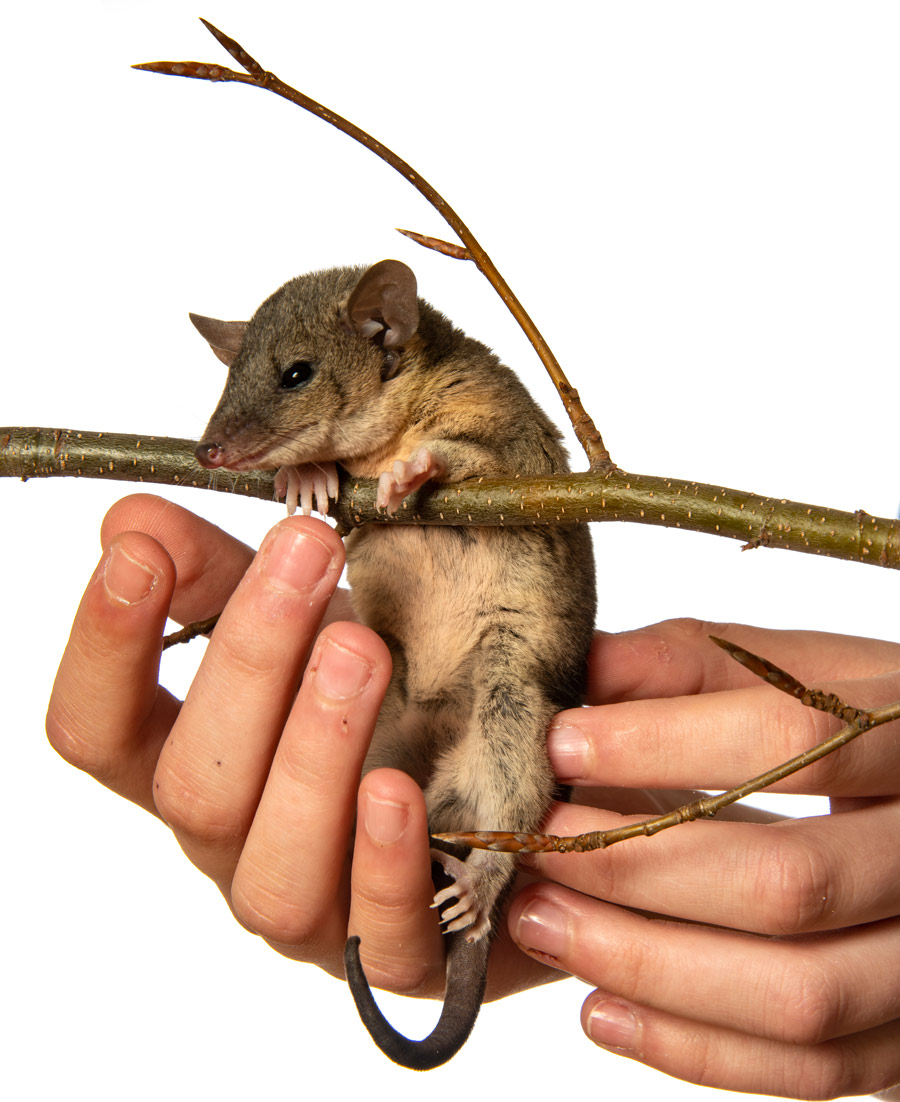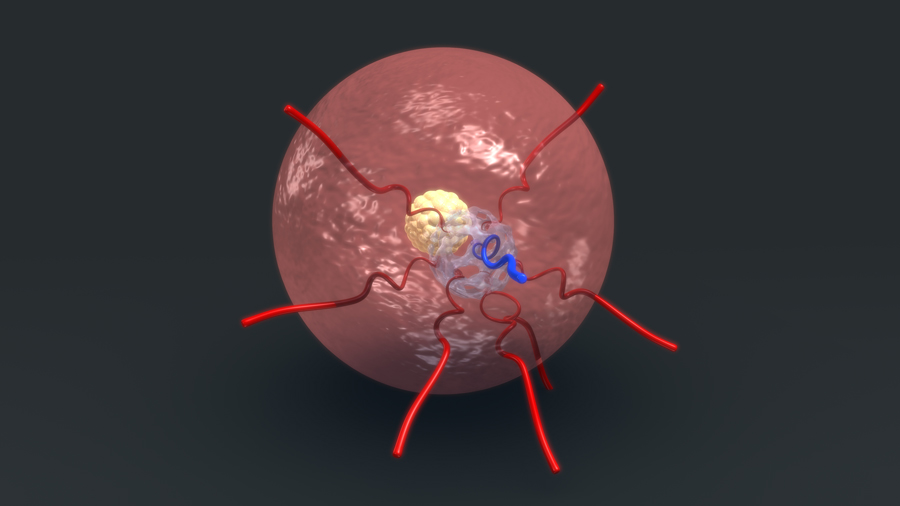Progesterone signalling is involved in marsupial pregnancy
In humans, the establishment of pregnancy requires some kind of signal from the foetus to the mother. In simple terms, the foetus ‘forces’ the ovaries to keep progesterone levels high to ensure everything is ready to promote embryo development. This is known as maternal recognition of pregnancy.
For a long time, researchers believed marsupials lacked such a way to regulate embryo development during gestation. After all, it’s all over in just a few days. There would appear to be precious little time for any significant changes in progesterone levels. Early studies seemed to confirm this belief: pregnant and non-pregnant females showed similar levels of this hormone.

New evidence is coming to light, however. Across a wide range of marsupials, such as the wombat and the Tasmanian devil, fluctuations in progesterone levels seem to coincide with crucial changes in both uterus and embryos. Now, Yolanda Cruz, Robert S. Danforth Professor of Biology and her team from Oberlin College, Ohio, want to dig deeper and assess how progesterone levels in the lab opossum (Monodelphis domestica) may have a role in embryonic development.
Opossum as a model animal
The opossum has become an essential animal model to study the evolution of mammalian and marsupial pregnancy. Like many other marsupials, opossum pregnancy is remarkably short at only 15 days. For most of gestation, the foetus is protected by a shell-coat preventing physical contact between maternal and foetal tissues. Finally, on day 13, this coat is broken and 48 hours later, exceedingly small and seemingly immature babies are born.
Ovaries are involved in regulating pregnancy
For Professor Cruz, the best way to explore the question of marsupial pregnancy is to look at changes in the uterus and ovaries throughout the reproductive cycle. It could be argued that, if the mother does not recognise the presence of the embryos, then the inner layers of the uterus – known as endometrium – should remain indistinguishable at the tissue level between pregnant and non-pregnant females.

The team’s results, however, indicated otherwise, providing evidence for endometrial recognition of pregnancy in lab opossum. They found that the uteri from pregnant females looked very different from those without an established pregnancy. The team found differences as early as day 1, and by day 8 the uterus was significantly thicker in pregnant animals, suggesting greater secretory activity by maternal tissues.
The effects of progesterone signalling may be due to an increase in progesterone receptor expression, and not to changes in circulating or serum progesterone.
Earlier work in the Cruz lab had indicated that the pregnant lab opossum, as well as other marsupials, produce an unusual signalling protein during the first 9 days of gestation. Not surprisingly, early pregnancy factor (EPF) was never spotted in non-pregnant animals. This special protein is secreted by the ovaries in a wide variety of mammals studied over that past 50 years and it’s believed to be the earliest sign that a viable embryo is developing in the uterus. Indeed, EPF is acknowledged as the earliest sign of a viable pregnancy in both marsupial and placental mammals.
Progesterone signalling
If EPF signals pregnancy in marsupials, then might progesterone actually also have a role in establishing and maintaining pregnancy in these mammals? If such a role cannot be attributed to changes in progesterone levels, as has been reported for several marsupial species, might changes in the level of progesterone receptor protein be detected instead? With this in mind, the team decided to compare not only levels of progesterone, but also progesterone receptors in pregnant, non-pregnant, and pseudo-pregnant opossums.

(Monodelphis domestica).
When it came to total progesterone, levels were similar between pregnant, non-pregnant and pseudo-pregnant opossums, but there was a surprising fluctuation during pregnancy which caught the team’s attention. In this case, progesterone levels suffered a dip around day 5, and then gradually increased again reaching a peak on day 9.
Interestingly, the same interval was also prominent when it came to progesterone receptors. Up until day 5 expression of these receptors in the uterus was limited, but by day 9 they were firmly established and operational. In contrast, their expression in the ovaries (more specifically, in the corpus luteum) was highest on day 3 but gradually become patchier by day 9.
In practical terms, although progesterone levels were not much higher during the brief pregnancy, Professor Cruz believes localised progesterone signalling is possible by controlling expression of progesterone receptors. In other words, opossums can make do with a tweak in the level of progesterone receptor activity and not the more energetically expensive increase in progesterone production by the ovary. Because the pregnancy is so short, they only need the right receptors expressed in the right location at the right time. “This suggests that progesterone signalling is elevated during pregnancy despite modest rises in serum progesterone,” said Professor Cruz.

Risk of embryonic failure
It’s becoming more apparent that this window between day 5 and day 9 is a crucial phase during pregnancy, with several changes in progesterone and progesterone receptors happening simultaneously. It also coincides with a curiously long period spent in the blastocyst (hollow-ball) stage. In humans and mice, for example, the blastocyst stage is attained by day 4 of the 280- and 21-day pregnancy, respectively. By comparison, the blastocyst stage takes up to 9 days in the opossum, leaving less than 5 days to form all internal organs and complete the pregnancy.
It thus appears that blastocyst formation by marsupial embryos may be an extremely vulnerable phase during embryo development, with a high risk of failure and thus, complete brood mortality. Losing a few embryos during gestation could happen at any time, but total losses in a short period suggests more of a failure of the mother to recognise the pregnancy. Insufficient progesterone levels or faulty receptor activity, for example, would mean the end of the pregnancy.
Professor Cruz sees blastocyst formation as a bottleneck during marsupial embryogenesis. A process that takes up most of any pregnancy has to be difficult and thus vulnerable to perturbation. This study suggests that such a process almost certainly involves complex physiological synchrony, and thus signalling, between mother and embryo. “We now have shown that both EPF and progesterone are likely to have crucial roles in embryo-maternal signalling during marsupial pregnancy,” Professor Cruz concludes, “although the nature of these roles remains to be investigated in detail.”
Personal Response
Could this work lead to a ‘pregnancy test’ for marsupials?
<> No, because it would mean removing uterine or ovarian tissues from a living female—not advisable if only testing for pregnancy status. The best pregnancy test is actually the early pregnancy factor (EPF) test, because it can detect pregnancy within a week (or less) in humans, and within 24 hours of a fertile mating in mice. The drawback with EPF testing is it’s labour-intensive and thus impractical in nature.
